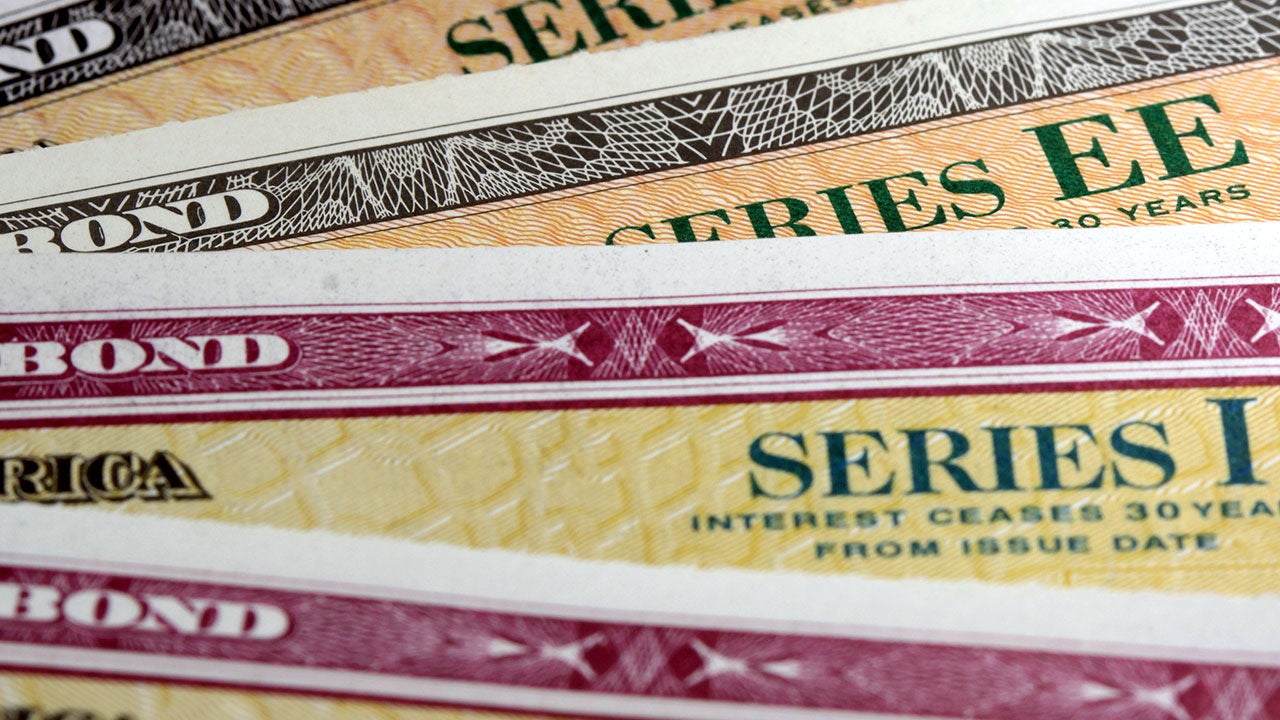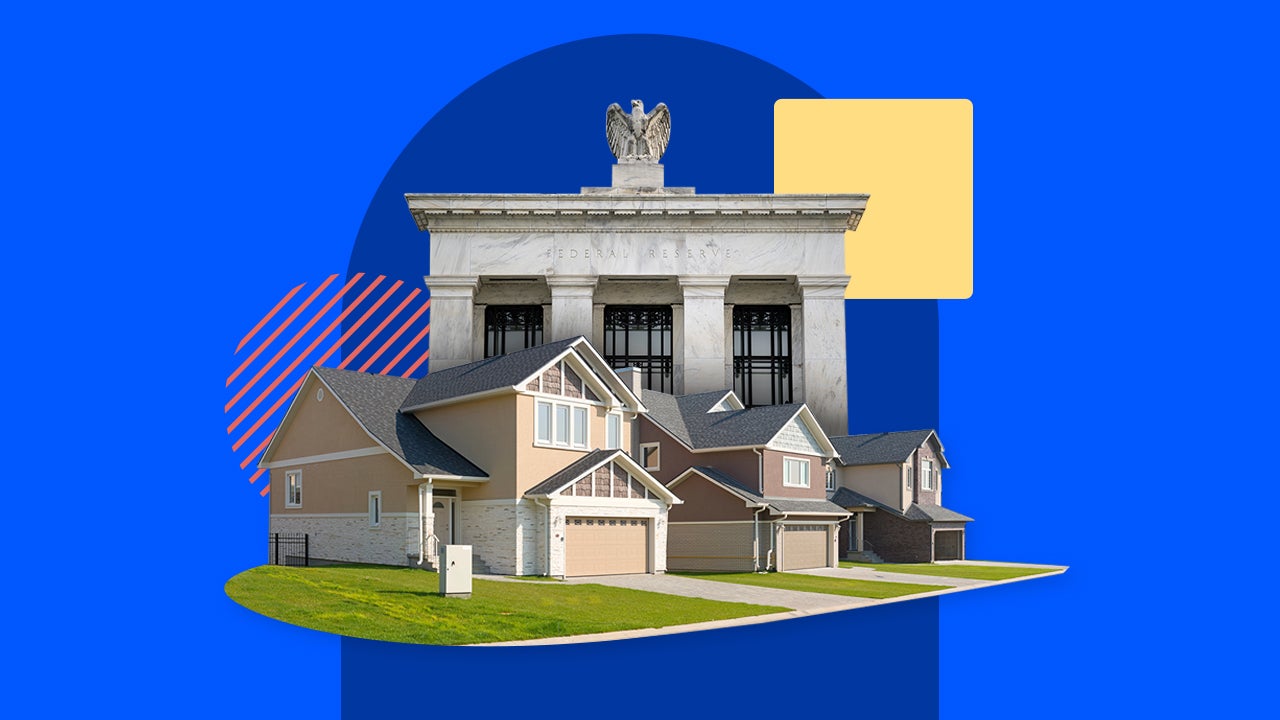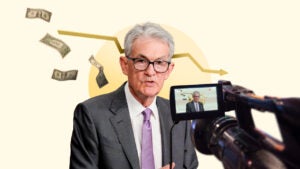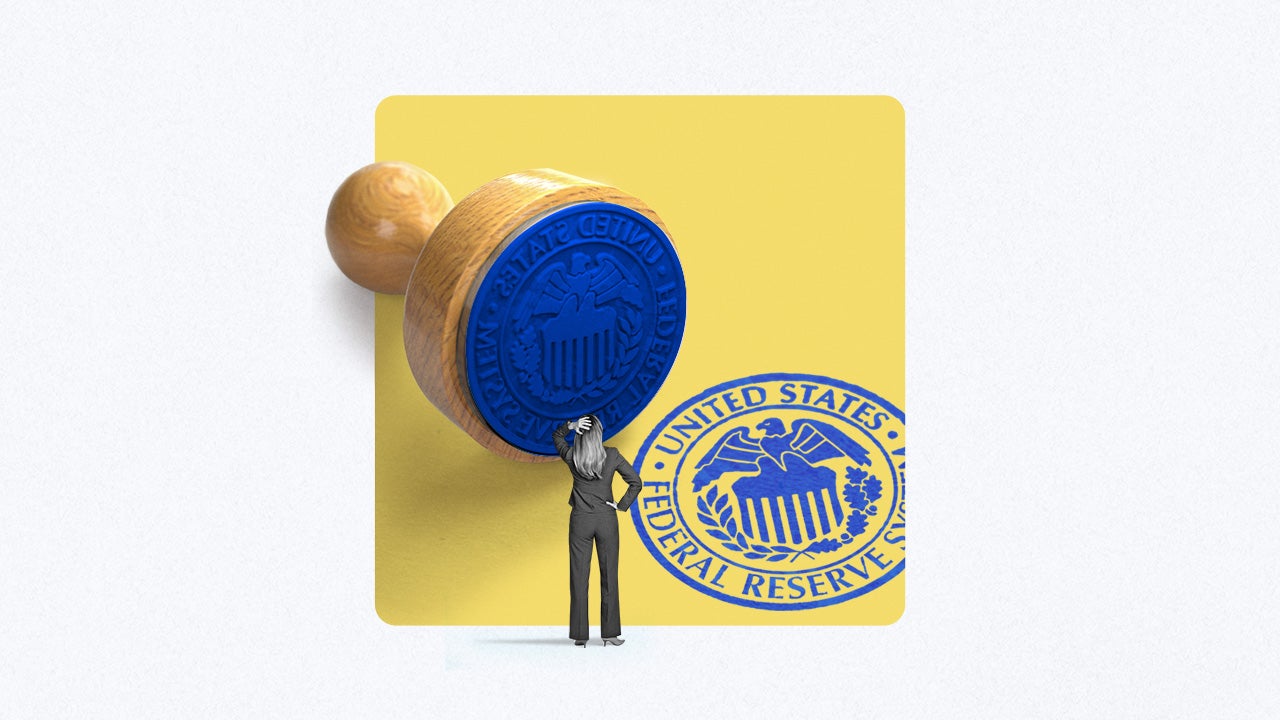9 myths about the Federal Reserve — debunked
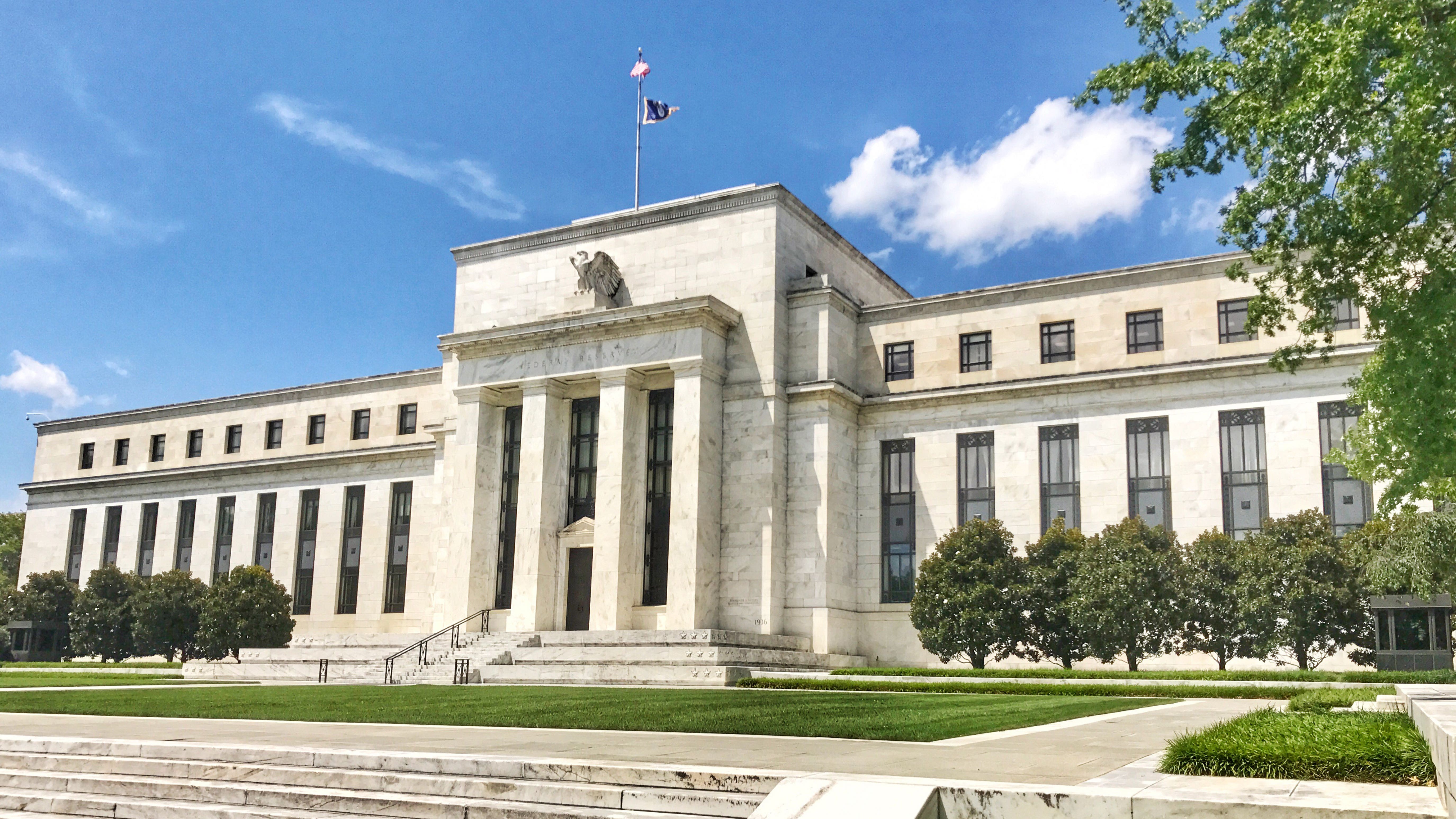
The Federal Reserve’s work is mind-bendingly complex. It’s no wonder the institution seems so mysterious.
Whether it’s the belief that the Fed prints money or the idea that having a central bank is unconstitutional, you’ve probably encountered some wild claims when trying to learn about what the U.S. central bank actually does. For the most part, though, these statements are just untrue – but they’re perpetuated by the complicated nature of the job.
The Federal Reserve was created by Congress in 1913 to maintain economic and financial stability throughout the country. The Fed’s rate-setting arm, the Federal Open Market Committee (FOMC), does this most notably by raising or lowering interest rates. After the 2008 financial crisis, the Fed also took on new regulatory roles, acting as a watchdog over the world’s largest financial institutions.
But lots of other assumptions sneak in. Here are nine of the most common myths about what the U.S. central bank does, according to experts, and an explanation for why they’re false
Myth No. 1: The Fed is funded through taxpayer money
Fact: The Fed’s income comes from interest payments on the government securities it owns
You may think that a portion of your taxes goes toward funding the Fed’s operations, but that’s not the case. The Fed doesn’t receive any funding through the congressional budgetary process, according to the board of governors, an intentional part of its design that helps maintain its independence from Congress.
Instead of taxes, the Fed instead draws its income primarily from the interest it receives on government securities and Treasuries that it purchases through those open-market operations.
Other sources include interest on its investments in foreign currencies, interest on loans provided to depository institutions and fees received in exchange for services provided to depository institutions – such as check clearing, transferring of funds and automated clearinghouse operations.
Myth No. 2: The Fed makes a profit
Fact: After paying its operational expenses, the Fed turns its profits over to the Treasury Department
After paying off its operating expenses, the Fed doesn’t keep its profits. The U.S. central bank returns the entirety of its bottom line over to the U.S. Treasury.
The largest share of the U.S. central bank’s operational expenses fund Fed officials’ salaries. Congress, however, determines how much each Fed board member makes. Chair Jerome Powell made $203,500 in 2019, according to the most recent Fed records, while all other board members made $183,100.
The board reviews the salaries for presidents of each reserve bank, who typically make more than the board of governors and the chair. Officials set those salary ranges based on the cost of labor in each head-office city. Those salaries can also increase, if approved by each regional Fed bank’s board of directors.
For example, San Francisco Fed President Mary Daly made $497,400, according to the Fed’s most recent annual report published in 2021. Meanwhile, St. Louis Fed President James Bullard had a salary of $416,300.
Still, that total pales in comparison to what “people with that level of training and expertise would make on Wall Street,” says W. Michael Cox, economics professor at Southern Methodist University who formerly served as the chief economist at the Dallas Fed.
Myth No. 3: The Fed isn’t audited
Fact: Independent accounting firms audit both the Fed’s board of governors and regional reserve banks
Search for “Federal Reserve” on social media, and you’ll probably encounter this phrase: “Audit the Fed!” The U.S. central bank, however, is audited. Independent accounting firms inspect the financial statements for both the Fed’s Washington, D.C.-based board of governors as well as the 12 regional reserve banks. In 2021, that firm was Klynveld Peat Marwick Goerdeler, or KPMG.
The Office of Inspector General selects who will audit the Fed’s board in addition to arranging its own reviews and investigations relating to the board’s activities and operations, including the Fed’s security and supervision duties that it took on in the aftermath of the financial crisis.
The Fed’s board, meanwhile, picks an independent reviewer to analyze the regional Fed banks’ financial statements. That firm has to remain independent from the Fed in all matters, meaning it can’t advise any of the reserve banks or have any affiliation with the Fed that could impair its impartiality, according to the board.
Those firms put together a report about “compliance and on internal control over financial reporting in accordance with government auditing standards,” according to the Fed. The resulting reports are all published on the board of governors’ website annually.
Other statements reporting on Fed financials include information about every Treasury security that the Fed owns.
Myth No. 4: The Fed is unsupervised
Fact: The Fed makes policy decisions independent of Congress but still reports to lawmakers
Technically, the Fed is independent from Congress, but the extent of that independence only goes as far as letting officials craft monetary policy and set interest rates free from political interference.
Most notably, the Humphrey-Hawkins Full Employment Act of 1978 requires the Fed chair to report semi-annually to both the House of Representatives and Senate on economic and monetary policy developments. That includes progress on the congressional-approved dual mandate of stable prices and maximum employment.
It’s also not uncommon for policymakers to make their opinions about policy known. Legislators including Sens. Elizabeth Warren (D-Ma.) and Bernie Sanders (I-Vt.), for example, sent a Nov. 1 letter to Fed Chair Jerome Powell disapproving of the Fed’s expected 75-basis-point increase.
Along those same lines, Fed officials also travel the country in the interim between meetings, delivering speeches and public remarks to help everyday people and markets understand what they’re doing and why they’re doing it.
“There’s this common idea that the Fed is this secret temple,” Cox says. “But the Fed was created by Congress, and it can be uncreated by Congress.”
Myth No. 5: The Fed prints money
Fact: While the Fed controls the money supply, the job of printing money rests with the Treasury Department
It may seem counterintuitive, but technically the Fed isn’t the entity in charge of printing money. That falls under the U.S. Treasury Department’s domain. Coins come from the U.S. Mint, and paper currency is produced at the Bureau of Engraving and Printing. The Treasury oversees both entities.
The Fed, however, does play a role in determining how much money is in circulation. It adds money – or takes it away – by buying or selling U.S. Treasury securities and other financial instruments. The Fed pays for those securities by crediting funds to the reserves that banks hold in accounts at the Fed. Consequently, that influences how much banks can loan, which in turn determines the volume of bank deposits held by the public, as the St. Louis Fed explains.
The Fed can also serve as a “lender of last resort,” providing credit to banks or other financial firms experiencing financial distress and teetering on the brink of collapse. In a sense, those loans have a lever on the money supply as well, giving banks the ability to offer more funds to consumers.
The Fed also has a hand in circulating that currency once it’s printed. First, it distributes that money to banks. Second, it can choose to take bills directly out of circulation when they appear to be too old or worn out – or even counterfeit, according to the St. Louis Fed.
Myth No. 6: The Fed is privately owned
Fact: Congress set up the Fed to serve public, not private, interests
Americans often mistake the Fed as a privately-owned bank, similar to other financial institutions. To be sure, certain aspects of the Fed System mirror private companies, but Congress created the Fed to serve the public. The ultimate overseers of the Fed are Congress, even if they don’t dictate what the Fed decides to do with monetary policy.
The 12 regional reserve banks operate similarly to a private company in that they have a nine-member board of directors that selects the president and vice presidents who lead it. Yet, to implement checks and balances, the Fed’s board chooses three of those board members; the remaining six are selected by commercial banks that are members of the Fed System.
The other main pillar of the Fed — the Washington, D.C.-based board of governors — is considered an independent government agency. Congress gave the Fed a decentralized structure to ensure policymakers have a perspective on what’s going on across all corners of the country.
Myth No. 7: The Fed’s biggest concern is Wall Street
Fact: Sharp market plunges can be worrisome to the Fed, but only because of how much they can hurt the economy as a whole
At the onset of the pandemic, Fed officials drew major criticism when they decided to inject trillions of dollars worth of cash into a short-term loan agreement exchange known as the “repo market.” Sen. Sanders didn’t help the discourse, posting in a March 2020 tweet: “When we say it’s time to provide health care to all our people, we’re told we can’t afford it. But if the stock market is in trouble, no problem! The government can just hand out $1.5 trillion to calm bankers on Wall Street.”
That’s despite the Fed only injecting cash in the form of short-term loans — meaning, money that immediately had to be paid back — that also wasn’t taxpayer funded. The concerns highlighted just how easily the Fed can look like it only cares about Wall Street.
To be sure, the Fed doesn’t want to see steep and swift market corrections. This isn’t, however, because it wants to protect investors’ bottom lines. Rather, the fear is all about what downdrafts could mean for the economy. Massive sell-offs can weigh on the solvency of businesses, threatening employment and broader economic complications.
Such was the key talking point for Fed and Treasury officials during the financial crisis when both agencies conspired to prevent banks and organizations deemed “too big to fail” from collapsing.
“If we don’t do this tomorrow, we won’t have an economy on Monday,” former Fed Chair Ben Bernanke notably said during the worst of the financial crisis, when he and Treasury Secretary Hank Paulson approached Congress for $700 billion in funds to help unfreeze credit markets.
Myth No. 8: The Fed is unconstitutional
Fact: Congress created the Fed with the Federal Reserve Act of 1913
The Fed is arguably the most powerful central bank in the world. Its decisions on interest rates impact all of the U.S., as well as other countries around the globe.
However, its leading officials are not elected, nor are they considered directly part of the government. This makes some people a bit suspicious about the Fed in general and could be a reason why so many Americans are skeptical about its purpose.
Congress, however, created the Fed more than 100 years ago under President Woodrow Wilson, with the passage of the Federal Reserve Act. Wilson wanted to form a U.S. central bank charged with maintaining economic stability in response to a banking panic just six years earlier. (At the time, private banks and business owners were relied upon to maintain economic stability, flooding the system with capital and cash to keep the financial system afloat.)
Before the Federal Reserve, there were two central banks in the U.S. The First Bank of the United States lasted from 1791 until 1811, and the Second Bank of the United States existed between 1816-1841.
Myth No. 9: The Fed can prevent recessions
Fact: The Fed can’t prevent recessions, but it often causes them
The Fed adjusts borrowing costs to achieve its economic goals: Stable prices and maximum employment. But the risks surrounding monetary policy are often asymmetrical. Higher rates can often push the economy into a recession (as many consumers and businesses fear during the current high-inflation era), but the Fed is often ill-equipped to prevent a downturn.
Case in point: The coronavirus pandemic. Even though the Fed cut interest rates three times in 2019 to help prolong the expansion, it didn’t save the U.S. economy from its eventual demise when a novel virus started spreading across the globe.
While the Fed can slash interest rates to help heal the financial system, lower rates are never a panacea. Businesses and consumers often need time to recover before the U.S. economy gets back on track. And as was the case during the coronavirus pandemic, exogenous shocks that have nothing to do with monetary policy often can still harm the goals the Fed is working toward.
Bottom line
Even though the Fed’s role is complex, it has one of the most profound impacts on your wallet, likely more than any other financial policymaker in Washington, D.C. Understanding how the Fed works and how it impacts you can help arm you with the knowledge you need to make better, more-informed financial decisions.



